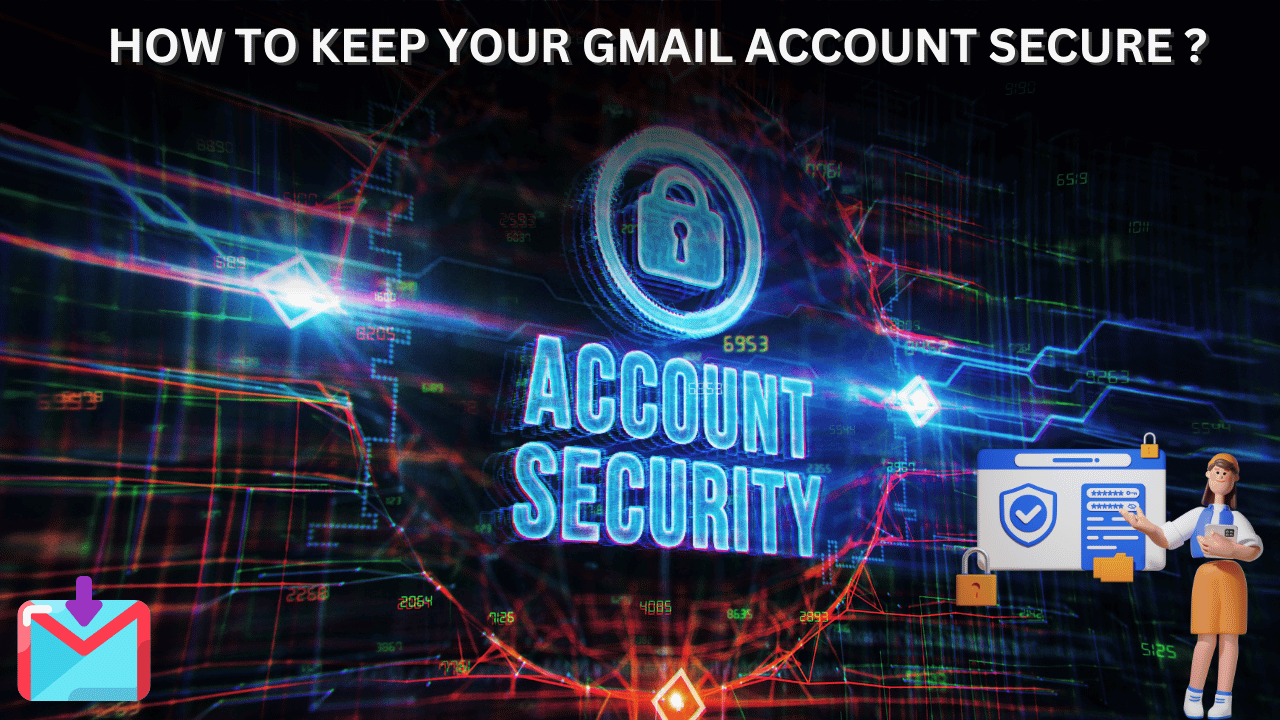
In today’s digital age, securing your Gmail account is essential to protect your personal information, emails, and sensitive data. Here are the top tips for ensuring your Gmail account remains safe from hackers and other security threats:
1. Enable 2-Step Verification (Two-Factor Authentication)
- Why it’s important: 2-Step Verification adds an extra layer of security by requiring a second form of verification, usually through a mobile phone or app.
- How to enable it: Go to your Google Account Settings > Security > 2-Step Verification, and follow the instructions to set it up. This way, even if someone gets hold of your password, they’ll still need a verification code sent to your phone.
2. Use a Strong, Unique Password
- Why it’s important: A strong password is the first line of defense against unauthorized access. Avoid common phrases, dictionary words, or sequential numbers.
- How to create a secure password: Use a combination of uppercase and lowercase letters, numbers, and special characters. Aim for a minimum of 12 characters and avoid using the same password across multiple sites.
3. Regularly Review Security Settings and Recent Activity
- Why it’s important: Google provides tools to review and manage the devices and apps that have access to your account.
- How to do it: Go to Google Account Security Checkup (you can find this in your Google Account settings). Review recent logins, connected devices, and third-party apps with account access to ensure no unauthorized activity.
4. Be Cautious of Phishing Emails
- Why it’s important: Phishing emails are a common way for hackers to steal personal information.
- How to recognize them: Look for suspicious sender addresses, generic greetings, and urgent messages asking for personal information or financial details. Never click on suspicious links or download attachments from unknown senders. Use Gmail’s built-in phishing report feature to report such emails.
5. Keep Your Recovery Information Updated
- Why it’s important: Updated recovery information makes it easier to regain access if you get locked out.
- How to update it: In your Google Account settings, ensure that your recovery phone number and email address are current. This will allow Google to contact you if there are security issues or to help you recover your account.
6. Enable Security Alerts for Your Account
- Why it’s important: Gmail can alert you if there’s suspicious activity on your account, like an unusual login from a new device.
- How to enable alerts: In the Security settings, turn on notifications for suspicious activity. Google will send you alerts if it detects anything unusual.
7. Use a Password Manager
- Why it’s important: A password manager helps you securely store and remember strong, unique passwords for each of your accounts.
- How it works: Password managers can generate complex passwords and autofill them securely. Google even has a built-in password manager you can use, or you can choose from reputable third-party options.
8. Avoid Using Public Wi-Fi for Sensitive Actions
- Why it’s important: Public Wi-Fi networks are often unsecured, making it easier for attackers to intercept your information.
- What to do instead: If you need to access your Gmail on public Wi-Fi, consider using a Virtual Private Network (VPN) to add a layer of encryption and security.
9. Regularly Update Your Devices and Applications
- Why it’s important: Outdated software often contains security vulnerabilities that hackers can exploit.
- How to stay updated: Ensure that your browser, Gmail app, and operating system are always up to date to benefit from the latest security patches and improvements.
10. Sign Out of Your Gmail Account on Shared Devices
- Why it’s important: Remaining signed in on shared or public devices can expose your account to unauthorized access.
- What to do: Always log out after using Gmail on a shared or public computer. You can also remotely log out from all devices by going to Account Activity in Gmail’s settings.
Conclusion
Securing your Gmail account requires a proactive approach, using both built-in security features and personal vigilance. By following these steps, you’ll be able to significantly reduce the risk of unauthorized access and keep your personal information safe.







